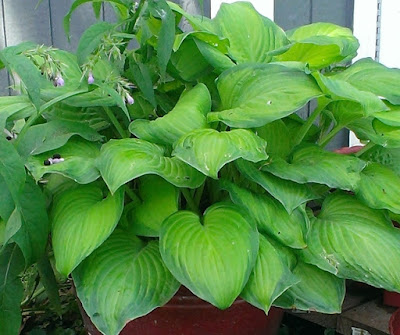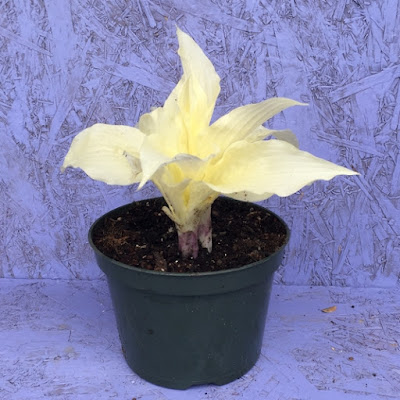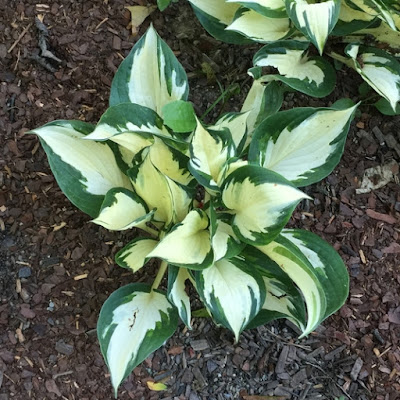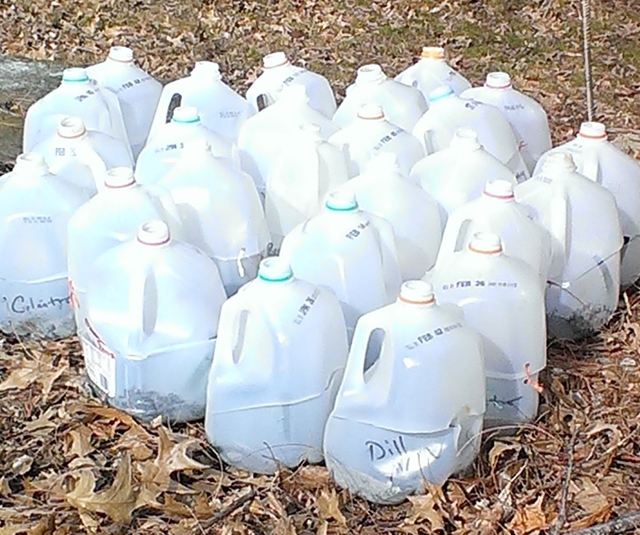Sun's Effect on Hosta Leaf Color
Hostas plants continue to be a favorite perennial plant for plenty of reasons. Their toughness, beauty, ease of care and variety of great sizes, leaf colors and shapes make it one of the best plants for a shade or semi-shade garden.
Contrary to what some people may think, though, no hosta will survive, much less thrive, in complete shade. All plants need some sunlight to photosynthesize.
But just how much sun do hostas really need?
If you're not so concerned about the hosta's leaf color through the season, you can plant your hosta with morning sunshine and semi or dappled sun during the afternoon. All hostas will be nice and healthy in these conditions.

If you're looking for that exact picture-on-the-website color, though, it becomes a bit tricky and may take some trial and error. Learning about the sun's effect on hosta leaves can go a long way in achieving the right placement.
Try Audible Premium Plus and Get Up to Two Free Audiobooks
First, sun is not sun is not sun
The heat and brightness experienced in a full sun location can vary from area to area as well as the time of day. Full sun in the morning hours will not be as intense as full sun in the afternoon. Sun in the south is, of course, more intense than the sun in the north.
There is also the consideration of microclimates. Things like fences, buildings, and even other plants can shade an area for part of the day and that needs to be considered.
Some Generalities
 |
The Shining Hosta |
Fragrant Hostas
There are hostas with fragrant flowers. These have evolved from H. Plantaginea. The Shining, pictured above, can tolerate more sunny conditions. In fact, fragrant hostas need four to six hours of sun to develop those beautiful fragrant white blooms.
And unlike most other hostas, the fragrant ones bloom in the late afternoon instead of in the early morning. This species also has the ability to grow new foliage during the summer months.
Fragrant hostas. Hosta Lists
Thick Leaves
Hostas with thicker substance to their leaves can take more sun as they can absorb and hold more moisture. Sum and Substance, Big Daddy, and First Frost are great examples of this. Conversely, hostas with thinner leaves are more susceptible to sun-scald.
Try Amazon Prime 30-Day Free Trial
Leaf Color
Leaf color plays an important role in answering the question of how much sun a hosta needs for the best color and health.
Blue Hostas
Here are some generalities.
Blue hostas require the most protection from the sun because the blue color is actually a waxy coating on the top and or bottom side of the leaves. The leaves are actually a shade of green, but the waxy coating makes them appear those great shades of blue.
Further reading: Sun's Effect on Blue Hostas
Too much sun can cause this waxy coating to melt off and expose the green leaf underneath. This is the reason it is recommended that blue hostas are planted in deeper shade than other hostas.
The best siting for blue hostas is some morning sun and complete afternoon shade. If your blue hosta is keeping its blue color through most of the season, it's obviously in the right spot. Keep in mind, though, that blue hosta cultivars differ greatly in their blue coloring and in how long they will hold their blue color into the season.
Dark Green Hostas
Dark green-leafed hostas need less sunlight to thrive. This is because they have more chloroplasts in their leaves and photosynthesis can occur with less light.
To keep that deep green color, plant it like you would a blue hosta. If you don't mind a lighter green color, you can give it more sun.
 |
Guacamole Hosta |
Light Green Hostas
Light green hostas may require more light. In fact, you can somewhat control the color of the leaves by their placement. In more sun, the leaves will begin to turn even lighter.
 |
Fire Island Hosta |
Gold, Yellow or Chartreuse Hostas
Generally, hostas that tolerate more sun have leaves with hues of white, gold, or yellow. The leaves may be solid or variegated. These are the most sun tolerant of the hostas. They're able to handle more sun provided they're kept adequately moist. They need at least two hours of direct sun to look their best.
The yellow leaf colors will look brighter when given more sun. Without at least a couple of hours of sun, the yellow leaf color can fade to green or chartreuse, or yellow hostas that emerge green may stay green instead of turning yellow.
 |
White Feather Hosta |
White Hostas
As a general rule, the more white a hosta is, the more sun it needs to maintain its vigor. Most solid white leafed hostas, like White Feather, emerge a ghostly white then the leaves become white with light green stripes as it matures.
Again, the thicker the leaf, the more sun it can tolerate. Thin leaved white hostas should be restricted to partial shade or early morning sun and little or dappled afternoon shade.
White or Yellow Centered Variegated Hostas
These tend to burn in too much sun unless the hosta has thicker leaves. Morning or late afternoon sun is recommended for white and yellow variegated hostas with thinner leaves.
 |
Loyalist Hosta |
Variegated Hostas
Variegated hostas have minimal amounts of chlorophyll. In full sun, the chlorophyll levels can increase and cause the leaves to pick up a green cast and look less variegated. With insufficient sun, any yellow or white margins may not lighten to the mature color.
Other Things to Consider
The hotter the weather and the more intense the sun, the more water a hosta needs. Hostas expire a lot of moisture through their leaves. For a large swath of hostas, installing a drip irrigation system is a great idea.
It is normal to see color changes in the hosta leaves throughout the growing season as the sun grows more intense. These changes are temporary for the season.
Sun Tolerant Hostas
There are hostas that are “Sun Tolerant.” If your hosta is advertised as such, it is your best bet for placement in some sun.
Here at Sunset Hosta Farm, we offer many sun tolerant hostas.
Further Reading: All about Sun Tolerant Hostas
Signs of Sun Scald
- Faded or bleached out green color on the leaves of blue hostas.
- Browned leaf edges.
- Dull color and faded spots on the leaves.
~~~~~~~~~~
Because there are so many variables to consider, you could follow all of the above suggestions and still not be successful in achieving an exact leaf color.
One of the great things about hostas is that they're easy to dig up and move to another location. And there's always the possibility of planting your hosta in a pot. Then you can move it around until it's in just the right spot for the coloring you're after.
~~~~~~~~~~

Have You Tried Winter Sowing??
If you haven't tried winter sowing, you're in for a treat. This method is especially good for sowing herbs. Winter sowing is basically sowing seeds in the bottom of milk jugs in the winter, setting the milk jugs outside for the winter and leaving them there until the seeds germinate in the Spring.
For our article containing detailed information about Winter Sowing, click here.
To watch our 30 minute video on how to winter sow, click here.




.png)






No comments:
Post a Comment
Note: Only a member of this blog may post a comment.